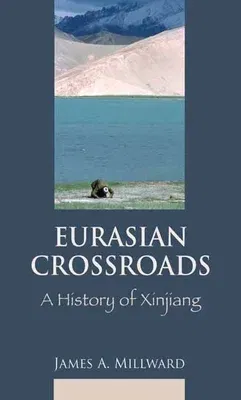Eurasian Crossroads is the first comprehensive history of Xinjiang,
the vast central Eurasian region bordering India, Pakistan, Afghanistan,
Tajikistan, Kyrgyzstan, Kazakhstan, Russia, and Mongolia. Forming
one-sixth of the People's Republic of China (PRC), Xinjiang stands at
the crossroads between China, India, the Mediterranean, and Russia and
has, since the Bronze Age, played a pivotal role in the social,
cultural, and political development of Asia and the world.
Xinjiang was once the hub of the Silk Road and the conduit through which
Buddhism, Christianity, and Islam entered China. It was also the point
at which the Chinese, Turkic, Tibetan, and Mongolian empires
communicated and struggled with one another. Xinjiang's population
comprises Kazakhs, Kirghiz, and Uighurs, all Turkic Muslim peoples, as
well as Han Chinese, and competing Chinese and Turkic nationalist
visions continue to threaten the region's political and economic
stability. Besides separatist concerns, Xinjiang's energy resources,
strategic position, and rapid development have gained it international
attention in recent decades.
Drawing on primary sources in several Asian and European languages,
James Millward presents a thorough study of Xinjiang's history and
people from antiquity to the present and takes a balanced look at the
position of Turkic Muslims within the PRC today. While offering fresh
material and perspectives for specialists, this engaging survey of
Xinjiang's rich environmental, cultural, and ethno-political heritage is
also written for travelers, students, and anyone eager to learn about
this vital connector between East and West.

